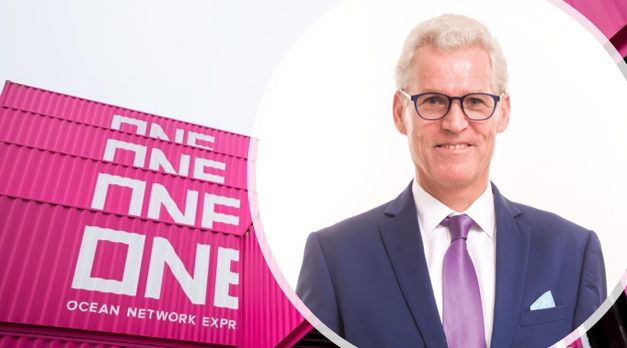Ocean Network Express (ONE) plans to invest US$20 billion to build new container ships and acquire terminals from this year to 2030.
Speaking at an online media conference on 23 March to discuss the pan-Japanese liner group’s mid-term plans, ONE’s CEO Jeremy Nixon said that the company will invest in 150,000 TEU of newbuildings annually.
Nixon said, “We have leased 38 vessels which will be deployed from 2023 to 2025, and that’s about 500,000 TEU. That process has already started and will replace ships due to come off-charter and help to improve our overall efficiency in slot costs and reduce our carbon footprint.”
These ships on long-term lease comprise six 24,000 TEU ships, fourteen 15,000 TEU ships, eight 12,000 TEU ships and ten 7,000 TEU ships.
Reportedly, ONE is lining up orders for ten 13,000 TEU vessels, to be equally split between Imabari Shipbuilding in Japan and Hyundai Heavy Industries in South Korea. Newbuildings ordered by ONE could be fuelled by hydrogen, ammonia or methanol, to align with the company’s green strategy.
Nixon continued, “In 2021, 75% of our fleet is chartered from our shareholders, and in 2030, this will be reduced to 20%. This is why we need to replenish our future ship requirements.”
Nixon mentioned that ONE will be given container terminals assets by its parent companies, MOL, NYK and K Line, which merged in 2017 to establish ONE.
Following a loss in its first year of operations, ONE had been profitable every year since, and a net profit of US$15.4 billion is expected for the fiscal year ending 31 March.
Despite talk of correction in freight rates after the Chinese New Year, Nixon is optimistic about freight levels remaining generally high. “Unlike previous years, there’s been no large drop-off in freight post-Chinese New Year,” he noted.
ONE’s boss added that half of the company’s revenue comes from contracts. “Shippers feel that freight rates will remain high and are committing to year-long contracts at rates close to or higher than spot rates,” he stated.
Martina Li
Asia Correspondent







